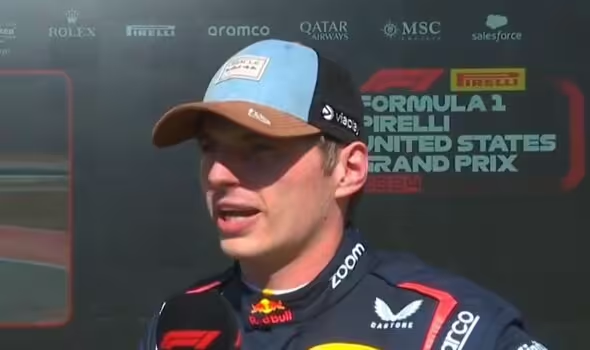
The 10 rule changes that the FIA have been forced to introduce in F1 because of Max Verstappen

The FIA have released a series of rule changes and clarifications over Verstappen’s time in F1.
The FIA have implemented a series of rule changes during Max Verstappen’s time in Formula 1.
The three-time world champion moved into F1 in 2015 with the Toro Rosso team, becoming the youngest driver ever to make his F1 debut at 17 years and 166 days old.
Verstappen would then be promoted to the works Red Bull team in the early stages of the 2016 season, and has stayed with the team ever since.
Over the years, the Dutchman’s driving style has seen him push the boundaries – which has seen him receive praise or criticism, depending on the incident – forcing the FIA to make subsequent clarifications and changes to their rulebook in order to avoid a repeat.
Following controversy involving Verstappen and Lando Norris at the United States Grand Prix, users on Reddit compiled a list of rule changes related to Verstappen – although there are a number of others.
Here are the rule changes and/or clarifications in full:
Minimum super licence age
But in January of that year, the FIA brought in new regulations which forced new drivers to be 18 years of age and hold a valid driving licence before they could obtain a super licence.
Moving under braking
At the 2016 Japanese Grand Prix, Verstappen avoided punishment for moving under braking while defending from Lewis Hamilton, despite the Mercedes driver needing to take evasive action.
The FIA subsequently banned drivers from changing direction under braking while defending – although the rule is subjective and therefore isn’t applied in all situations.
Unsportsmanlike behaviour clarifications
The FIA issued a clarification on regulations surrounding unsportsmanlike behaviour and physical altercations after an incident between Verstappen and Esteban Ocon following the 2018 Brazilian Grand Prix.
Play
The pair collided as Ocon was trying to unlap his rival, and Verstappen confronted him in the weigh-in area following the race in Sao Paulo.
The then FIA race director Charlie Whiting described the nature of Ocon’s attempted move as ‘unacceptable’, and while stating that he had the right to unlap himself on faster tyres, said it should have been done safely.
Overtaking and defending guidelines
Verstappen and Lewis Hamilton had a fierce on-track battle at the 2021 Brazilian Grand Prix, with the Dutchman forcing Hamilton off the track on more than one occasion.
Subsequently, the FIA decided to issue a new guideline for defending, which stated that if an overtaking car is ‘significantly alongside, the defending driver must leave at least one car’s width of space’.
Parc ferme guidelines
After the Grand Prix, cameras caught Verstappen inspecting Hamilton’s rear wing in parc ferme conditions – which was prohibited.
He was given a €50,000 fine by the FIA, who subsequently enhanced security measures and monitoring for upcoming Grands Prix and warned that drivers who breached the regulations in future could receive time penalties.
Post-race celebration guidelines
The FIA released new guidelines surrounding post-race dangerous driving after Verstappen performed burnouts across the line to celebrate his victory at the 2021 Styrian Grand Prix.
Drivers now must travel safely back to the pit lane after finishing each Grand Prix and cannot endanger other drivers.
Pit lane guidelines
Drivers were told they could not cross any part of their car over the pit exit line while rejoining the circuit.
Verstappen did so during the race but escaped a penalty. In future, however, any violation would cause a driver to be sanctioned.
New safety car rule
After the 2022 Saudi Arabia Grand Prix, the FIA intervened after Verstappen pulled up alongside Charles Leclerc before a safety car restart.
A clarification was added to the rulebook which stated that drivers could not have any part of their car alongside another car before the safety car restart line.
Track limits clarification
After Verstappen overtook Kimi Raikkonen while off the track to finish third in the 2017 United States Grand Prix – he was subsequently penalised and demoted to fourth – the FIA released a new clarification for track limits.
Track limits would subsequently be defined by white lines, with that particular rule being refined and adjusted over time.
The rule came into focus again over the most recent United States Grand Prix weekend when several drivers had lap times deleted and penalties enforced for crossing the white line at the penultimate corner.
Minimum super licence age update
Over nine years on from their original ruling, the FIA decided to update their minimum super licence requirements this summer.
While the original rule stated that drivers had to be 18 years of age, the FIA added a discretion to the wording – which they likely would have applied had Verstappen been in such a situation in 2015.
Following an application from Mercedes to allow Kimi Antonelli – who is 17 – to drive in practice at this year’s Italian Grand Prix, the rule now states: ‘At the sole discretion of the FIA, a driver judged to have recently and consistently demonstrated outstanding ability and maturity in single-seater formula car competition may be granted a super licence at the age of 17 years old’.
Be the first to comment
Copyright © 2024 | WordPress Theme by MH Themes

Leave a Reply